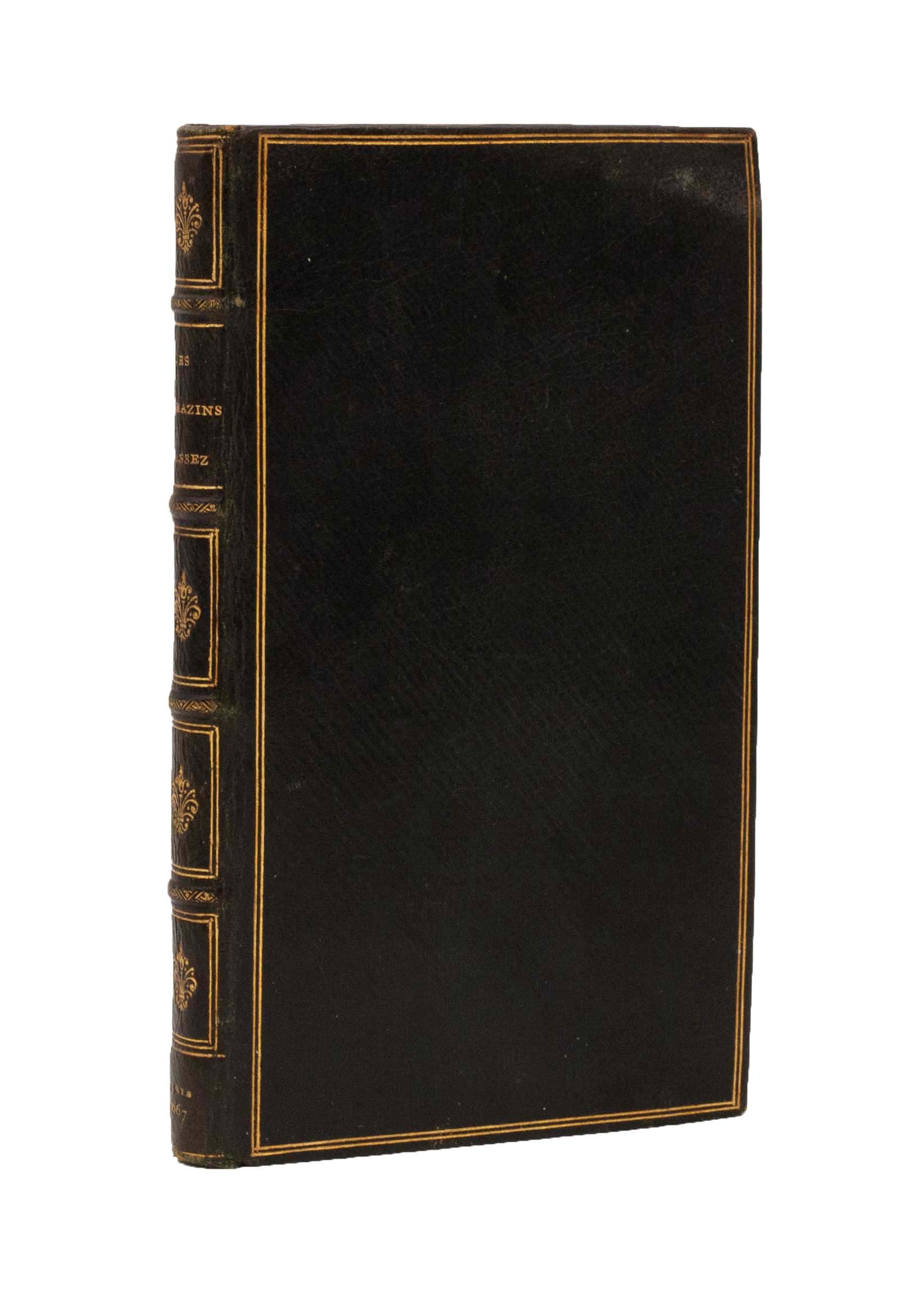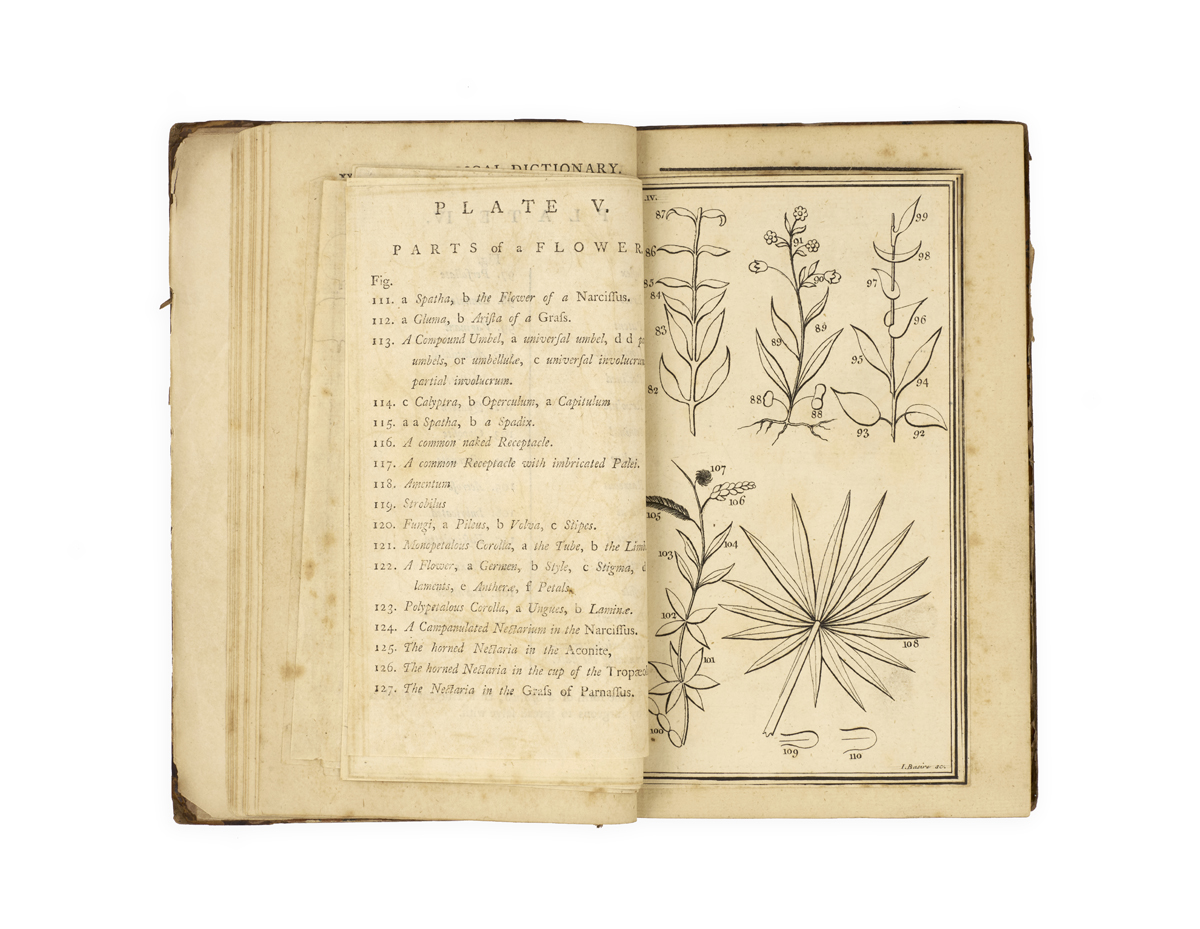
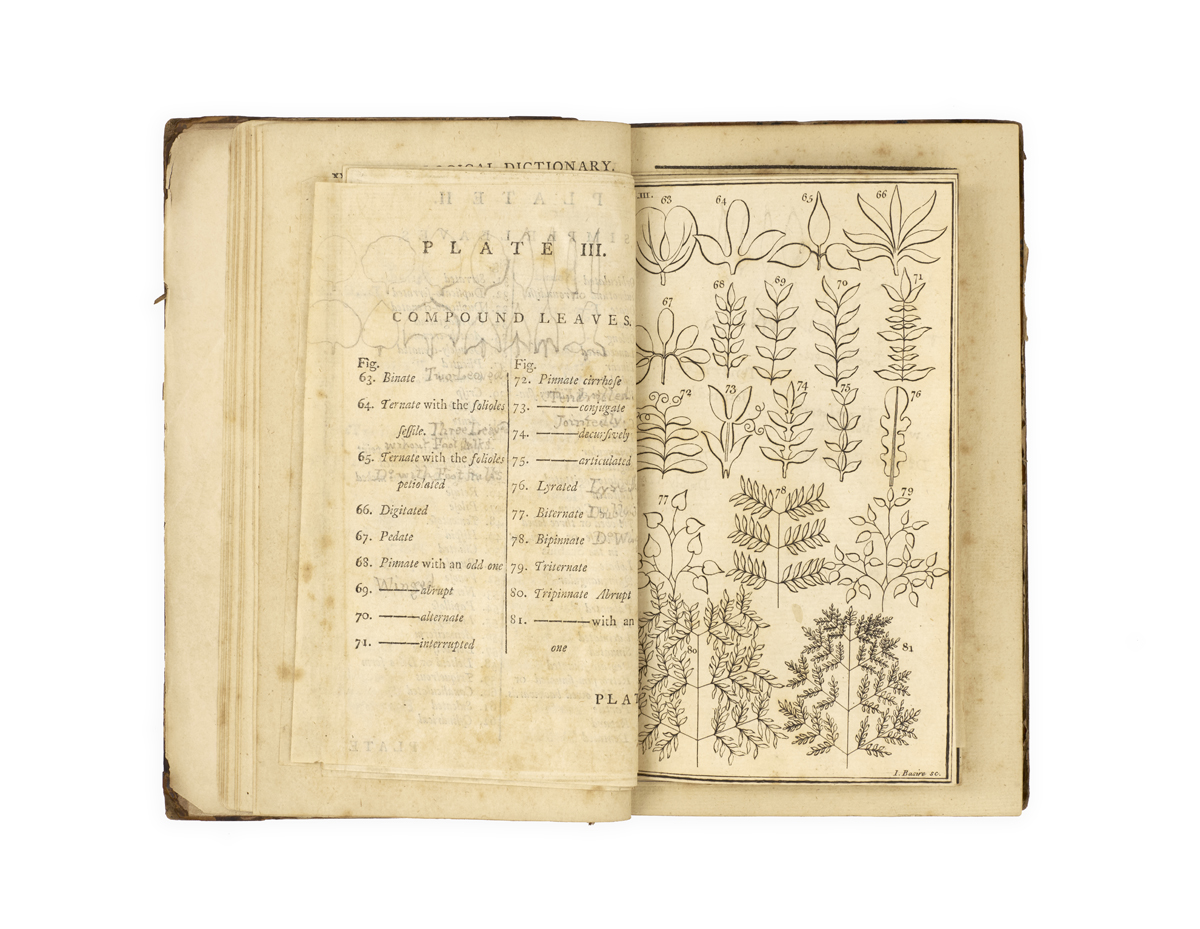
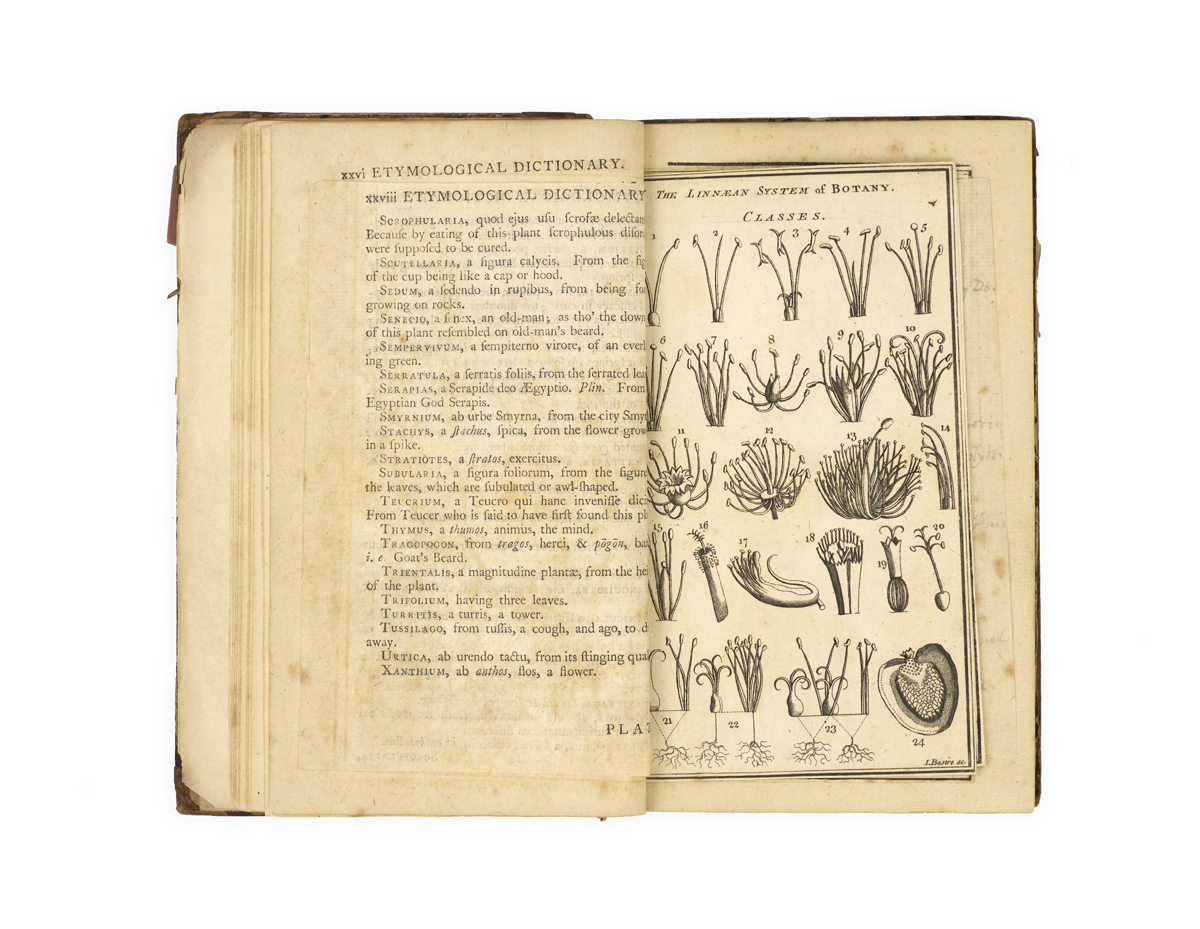
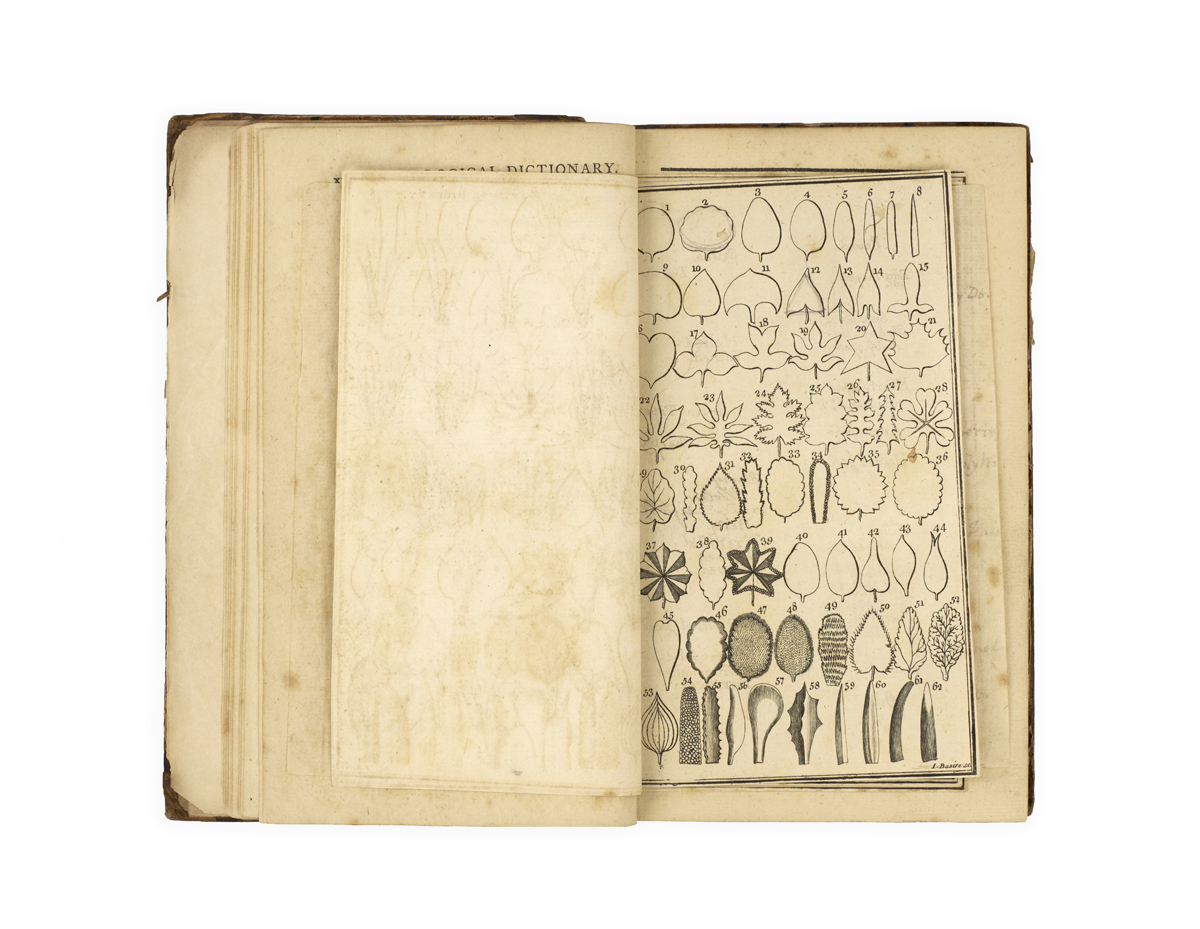
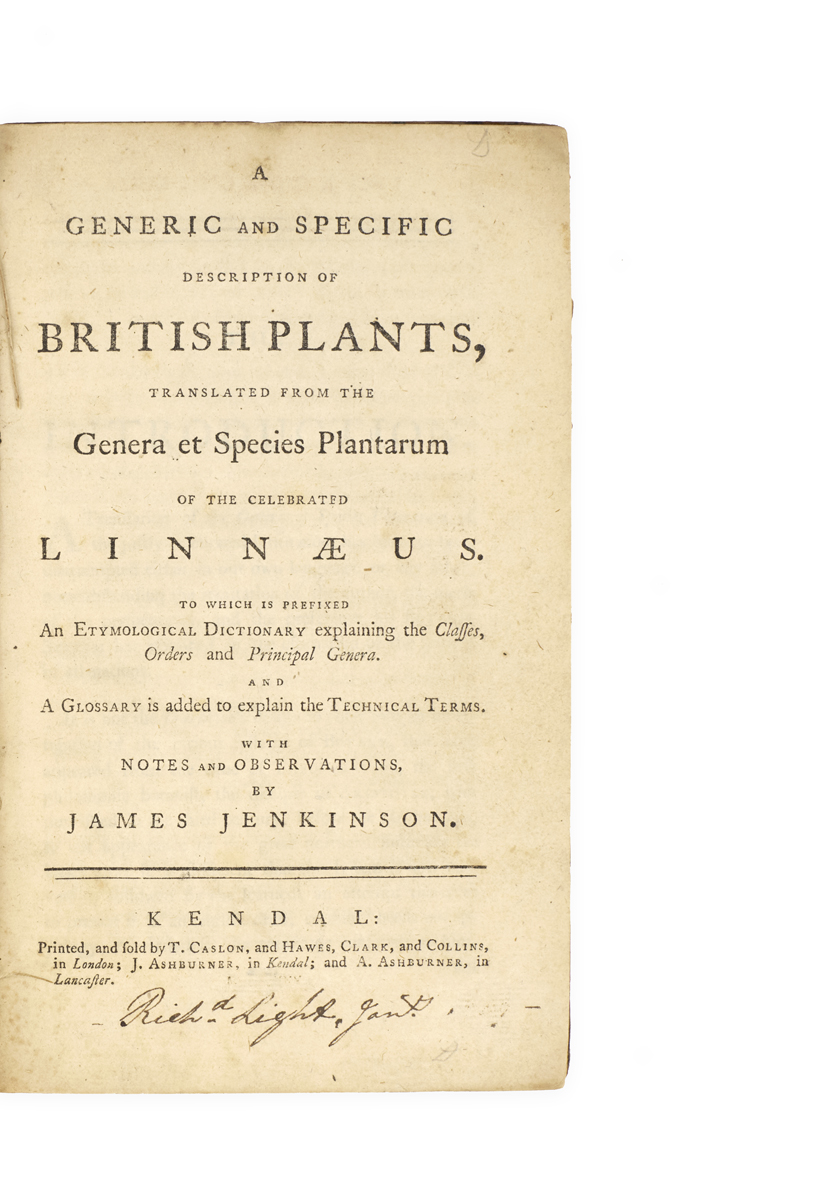
LINNAEUS, Carl (or von LINNÉ), and James JENKINSON (translator).
A generic and specific Description of British Plants, translated from the Genera et species plantarum of the celebrated Linnaeus, to which is prefixed an etymological dictionary explaining the classes, orders and principal genera, and a glossary is added to explain the technical terms, with notes and observations, by James Jenkinson. Kendal, T. Caslon, and for London, Hawes, Clark, and Collins, Kendal, J.
Ashburner, and Lancaster, A. Ashburner, 1775.
8vo, pp. xxviii, [4], 258, [9], with 5 engraved plates; plates and 3 accompanying leaves closely trimmed, some light toning and spotting, date largely erased from imprint; contemporary half calf with marbled sides, spine gilt and with black morocco lettering-piece; rubbed and worn, upper board and front free endpaper detached, head and foot of spine chipped; contemporary ink ownership inscription of Richard Light at foot of title.

Added to your basket:
A generic and specific Description of British Plants, translated from the Genera et species plantarum of the celebrated Linnaeus, to which is prefixed an etymological dictionary explaining the classes, orders and principal genera, and a glossary is added to explain the technical terms, with notes and observations, by James Jenkinson. Kendal, T. Caslon, and for London, Hawes, Clark, and Collins, Kendal, J.
First edition of this provincially printed partial translation of Linnaeus’s Genera plantarum. It precedes both William Withering’s The Botanical Arrangement of all the Vegetables naturally growing in Great Britain (1776), the first such work to be based on Linnaean taxonomy, and Erasmus Darwin’s The Families of Plants (1787), a translation and consolidation of the Genera plantarum and the Mantissae plantarum.
Of John Jenkinson, from a Quaker family of Yealand (between Kendal and Lancaster), relatively little seems to be known.
ESTC T81059; Freeman, British Natural History Books 2275; Henrey 980.

